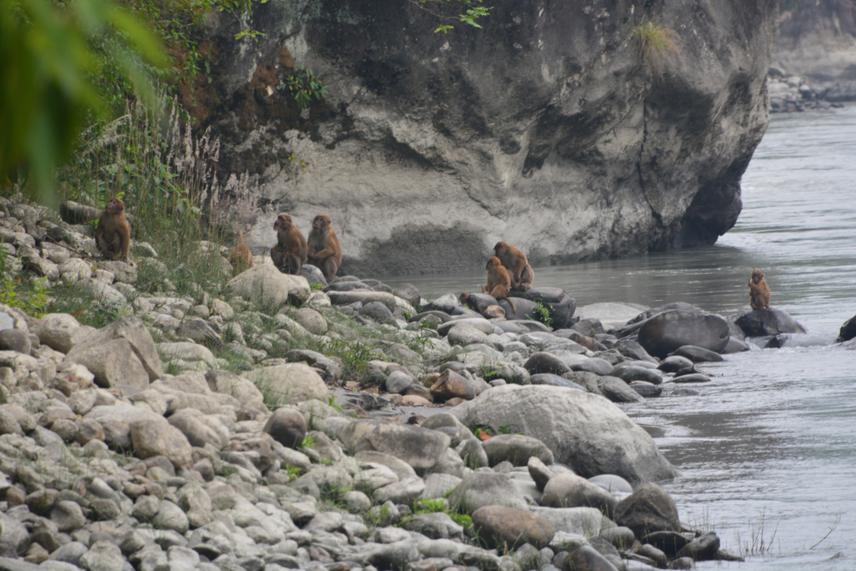Laxman Khanal
Other projects
14 Jul 2015
Sustainable Conservation of Assamese Macaque (Macaca assamensis) in the Catchment Area of Budhigandaki Hydroelectric Project, Nepal
19 Apr 2023
Blending Fine-Scale Exploration, Socioecology and Conservation Genetics to Conserve Enigmatic Assam Macaques in Nepal
This project will identify the population size and distribution of the nationally endangered and protected Assam macaque from one of the least studied area, the far-western Nepal. It will characterize the ecological niche of the Assam macaque which can be helpful for future survey at the potential areas and to test the impacts of climate change and other anthropogenic disturbances.
Identification of the level of conflicts between human and monkey, the contribution of Assam macaque in the crop loss, preventive measures being adopted against crop depredation, perception of the local people toward the species conservation, etc. will be done. Awareness generation among the local people about identification of Assam macaque against the Rhesus macaque, their conservation status and crop protection strategies will be done. These findings and activities are expected to help in conservation and management of the Assam macaque.

A troop of Assam macaque on the bank of Budhigandaki River
Previously, the westernmost distribution limit for the Assam macaque (Macaca assamensis) was considered to be the central Nepal (Wada 2005; Boonratana et al. 2008). However, few troops of this nationally protected primate have been reported recently from the far-western Nepal (Khanal et al. 2019). The far-western population of the species could be an Evolutionarily Significant Unit (ESU), therefore, their conservation is important. Human-monkey conflicts (especially due to the Rhesus macaque) is high in the area. Therefore, it is very important to explore the population and distribution and assess the conservation threats to the Assam macaque in far-western Nepal.
This study will be conducted in far-west province of Nepal along the Karnali River and the areas west of it. Surveys will be conducted along the river axes of Karnali, West Seti, Chamelia and Mahakali rivers and their major tributaries. Elevational range of the study will be between approximately 100 m asl to 3500 m asl. Spatial distribution of the Assam macaque within the study area will be surveyed by a modified line transect method (Buckland et al. 2010) using transects parallel to the river axis. Whenever a troop is encountered, detailed population census and vegetation survey will be conducted, and other environmental parameters will be noted. Ecological niche of the species will be modelled in MaxEnt software (Phillips et al. 2017). Conservation threats to the species, especially the crop depredation by the monkeys will be explored. Semi-structured interviews (SSI) will be used to identify the perceived risk and Participatory Risk Mapping (PRM) method (Smith et al. 2000; Webber & Hill 2014) will be used for monitoring the actual crop loss.
Awareness campaigns will be conducted among the community forest user groups. It will embrace multiple aspects of wildlife conservation including- human-wildlife conflicts, their drivers and consequences; different aspects of human-monkey conflicts, crop-raiding by monkeys and preventive and mitigating measures, correct identification of the nuisance monkey before any action, alternative cropping, legal provision of the country about human-wildlife conflicts, compensation measures, etc.
Peoples’ active participation in the conservation of wildlife is critical for the survival of many endangered species and can serve as an important economic, social, and security engine for communities. This project will involve the local people, empower their knowledge and skills about human-monkey conflicts and mitigation, develop positive attitudes towards the less nuisance and endangered Assam macaque.